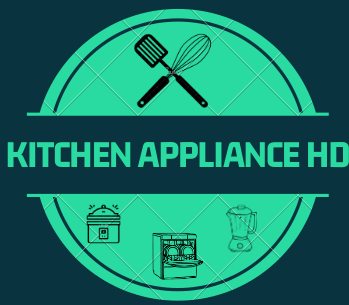Why is My Portable Ice Maker Not Working?
About 15 to 40% of kitchen appliances develop problems within the first five years of purchase. Therefore, you’re bound to experience a challenge when using your portable ice maker.
There might be several reasons why your portable ice maker is not working. The appliance might be off, not receiving power or water or there’s a breakage of the pump or compressor.
Countertop ice maker machines work automatically, each step proceeding the other. Any interference affects the entire system.
To accurately detect the problem, start from the basics. These include:
Power Connection
The most obvious first step is to check the power connection.
Is the ice machine plugged in? If yes, does the power outlet have power? The issue might be the power source or power cord.
Water Supply
Once you’ve checked on power, move to the water supply. Have you added adequate water to the ice maker? Ensure there’s quality potable water in the machine.
If you’re not sure what type of water to use, check out this article. Water in the reservoir should be room temperature, not warm or hot.
The next step is to set the machine. Select your ice size. The water pump should start operating after a few minutes.
If no water is moved from the reservoir to the water box, the water pump may be broken. Check on the pump or consult a professional to replace it.
The sensors of the machine may not be detecting the water, especially if you’re using distilled water. Try using tap water to check on the sensors.
Alternatively, there might be a blockage in the water supply line. This is common when using water with a high concentration of minerals.
Locate the filters in your ice maker machine (if any) and clean them. Clean with recommended detergents or white vinegar to clear any blockage.
Also, check the major water connections of the machine. These include water lines, pipes, and valves. Use the drain plug to remove any dispelled water.
Read: How Long Does It Take to Make Ice in Portable Ice Maker?
Why Won’t My Ice Maker Drop the Ice?
Your countertop ice maker may not be dropping the ice due to a fault in the ejector or heating system.
Analyze the machine to identify the specific issue. If the issue is the ejector system, you’ll find ice on the water box below the rods.
The ejector includes the scooper that moves the ice to the ice basket.
If there’s no ice on the water box, check to see if there’s ice stuck on the evaporator rods. For ice to fall, they need to heat up.
Check for any loose wires or broken components connected to the system. Fixing either of the parts may require you to replace them.
Consult a professional or customer support of your specific brand.
Why Does My Ice Maker Keep Saying Add Water?
Your ice maker keeps saying you add water when the sensor doesn’t detect any water in the reservoir.
If there’s water in the reservoir, reset the machine. You can use the reset button if your model has one.
If not, shut off the ice maker and let it sit for a few minutes. In case this persists, add a pinch of salt to the water or change the water type.
Check out: Is A Portable Ice Maker Worth It?
Why Is Water Leaking from My Ice Machine?
When a countertop ice maker is leaking, you’re likely to find a pool of water around it.
The probable cause of water leaking from your ice machine is a broken hose or pipe. You may have also failed to fasten the drain plug/cap when clearing water from the machine.
The broken pipe needs to be replaced. It may be a challenge to detect the exact broken pipe or section, especially if the leakage is small.
Examine the entire machine to identify any other leakages from the pump, valves, and water outlets.
Other Portable Ice Maker Problems
Aside from the above problems, other issues you may encounter when handling a portable ice maker machine include;
· Ice Maker Display Not Working
The display also known as the control panel allows you to communicate with the machine.
Your display may fail to respond to touch when the appliance is overwhelmed. The best cause of action is to reset and restart.
Also, give ample time for the ice maker to respond. For example, after switching it on, wait a few minutes before selecting the ice size.
A portable ice maker needs at least three minutes after starting up for the compressor to energize.
· Ice Maker Doesn’t Stop Making Ice
In an ideal situation, the ice maker stops making ice when the ice basket is full of ice.
When the machine continues to make ice even after the basket is full, there’s an issue with the temperature sensor.
A fix for this problem is to have the sensor replaced. Consult a professional or manufacturer to find out the best way to replace it.
· Leaking Coolant
You might observe an oily substance coming from your ice-making unit. This is the coolant that is compressed by the compressor to produce high-pressure gas used in the freezing process.
A good indicator of a leaking coolant is the production of less ice. The ice may also change in shape and size.
Coolant leakage is repaired by a technician.
It’s good to mention that this is not a common occurrence. The coolant leaking is from aging or aggressive handling of the machine.
Always remember to handle the ice maker with care. Since these appliances are portable, you’re more likely to move and interfere with the components.
A rule of thumb is to avoid inclining it more than 45 degrees when transporting. Also, let it sit for at least 2 hours after movement before use.
· The Ice Tastes and Smells Funny
You might find that the ice tastes and smells funny. The quality of water used might be the issue. Also, ensure that the ice maker is regularly cleaned.
A deep clean eliminates this problem. Another trick is to ensure that you empty the ice basket as quickly as possible to avoid contamination.
Read: What To Look for When Buying a Portable Ice Maker
Conclusion
As with any appliance, you’re bound to experience challenges when using your ice maker. The beauty is that most of the problems are known and there’s a fix.
Sometimes, you may overlook a small step that may make the machine not work. Other times, there might be a default or breakage.
Always remember to check your appliance before and after use to ensure all components are in good condition.
Also, maintain good practices such as cleaning, effective use, and storage. Here’s an article on How Often Should You Clean Your Portable Ice Maker?




